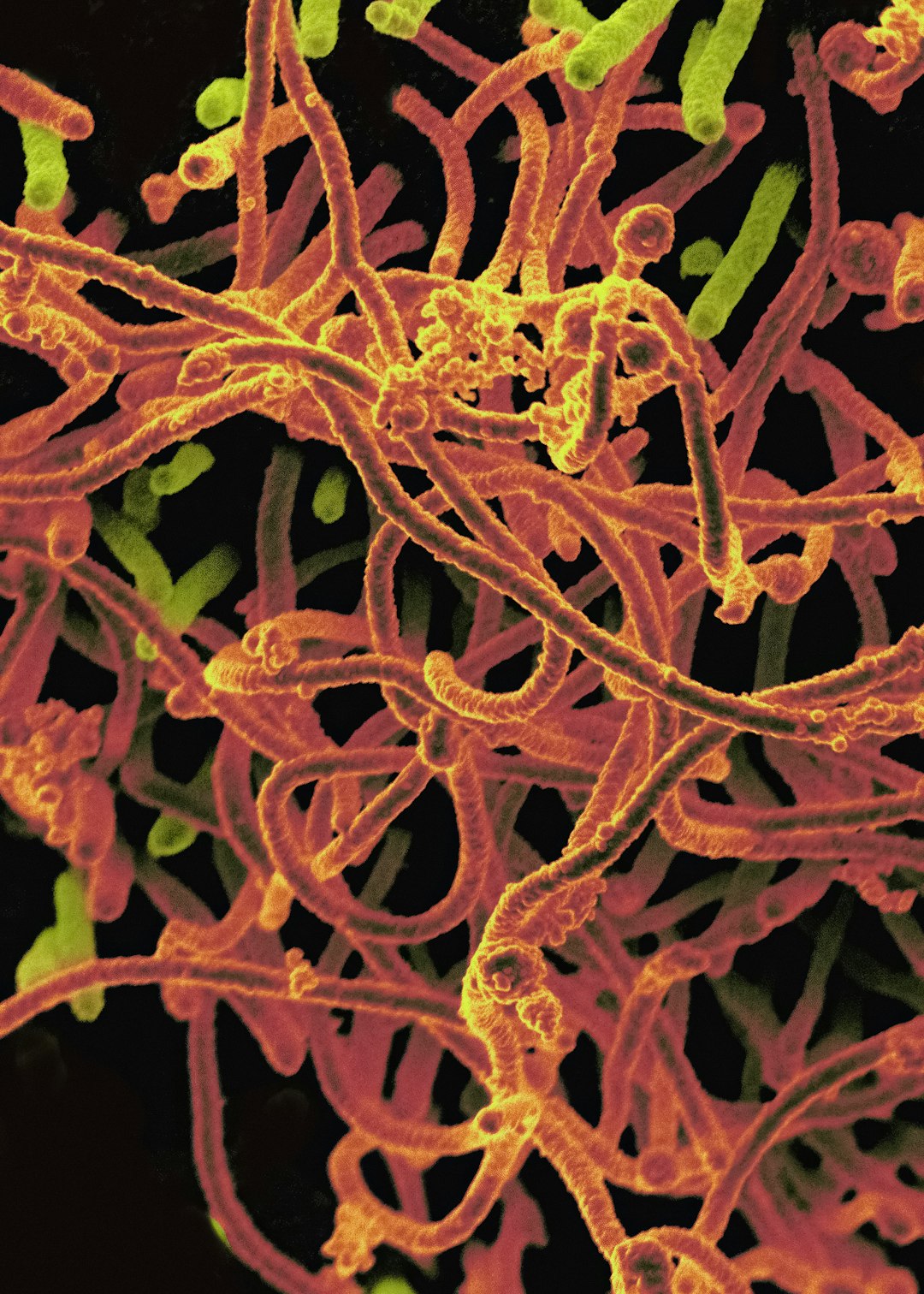The World Health Organization (WHO) reported today that the last Ebola patient in the Democratic Republic of the Congo was discharged today. No new cases have been reported since 25 September.
This starts the 42-day countdown to declaring the…

The World Health Organization (WHO) reported today that the last Ebola patient in the Democratic Republic of the Congo was discharged today. No new cases have been reported since 25 September.
This starts the 42-day countdown to declaring the…

Sirexatamab (DKN-01) in combination with bevacizumab (Avastin) and standard-of-care (SOC) chemotherapy demonstrated a manageable safety profile and was well tolerated vs bevacizumab plus SOC chemotherapy in patients with metastatic colorectal cancer (mCRC), according to findings from the phase 2 DeFianCe trial (NCT05480306) presented at the
In the intent-to-treat population, patients who received the DKK1 inhibiting IgG4 antibody sirexatamab demonstrated an overall response rate (ORR) of 35.1% (95% CI, 25.5%-45.6%) vs 26.6% (95% CI, 18.0%-36.7%) for the control arm (P = .10). Median PFS was 9.2 months in the experimental arm vs 8.3 months in the control arm (P = .17).
“Neither of these 2 outcomes reached statistical significance,” lead author Zev A. Wainberg, MD, said during the presentation of data. “However, looking at the DKK1-high population, defined as the upper median, the improvement started to bear fruit,” Wainberg, professor of medicine at UCLA and codirector, UCLA GI program, at UCLA Health in California continued.
There were 50 patients with higher DKK1 in the sirexatamab arm and 38 in the control arm. The ORR in the sirexatamab arm was 38.0% (95% CI, 24.7%-52.8%) vs 23.7% (95% CI, 11.4%-40.2%) in the control arm (P = .0706). Median PFS in the experimental arm was 9.03 months vs 7.06 months (HR, 0.61; 95% CI, 0.37-1.0; P = .0255). Median OS was not reached in the experimental arm vs 14.39 months in the control arm (HR, 0.42; 95% CI, 0.19-0.91; P = .0118).
After an initial safety run-in period (n = 33), a total of 188 patients with mCRC were randomly assigned 1:1 to receive either sirexatamab plus either leucovorin, 5-fluorouracil (5-FU), and irinotecan (FOLFIRI) or leucovorin, 5-FU, and oxaliplatin (FOLFOX) and bevacizumab (n = 94) vs FOLFIRI or FOLFOX and bevacizumab (n = 94).
Patients were eligible if they had received 1 prior 5-FU–based therapy, had microsatellite stable (MSS) CRC, and did not have a BRAF V600 mutation. The stratification factors were tumor sidedness (left vs right) and prior antiangiogenesis therapy (yes vs no).
The primary end point was investigator-assessed PFS and the secondary end points were safety, ORR, and OS. Key exploratory end points were PFS, ORR, and the OS of the DKK1-high subgroup.
The study was well-balanced for gender and region. The majority of patients were male across the arms (experimental, 68%; control, 55%). In the experimental arm, the majority of patients were from South Korea (53%) compared with 48% in the control arm. Forty-four percent of patients were from the United States in the experimental arm and 43% in the control arm. The majority of patients had left-sided tumors (both 75%).
“This was a predominantly liver-metastatic patient population, with nearly 75% in both arms having liver metastatic disease,” Wainberg said. Further, 47% of patients in the experimental arm had RAS-mutated disease compared with 57% in the control arm. Looking at prior systemic therapy, 48% of patients in the experimental arm had received antiangiogenesis therapy compared with 51% in the control arm.
The overall rate of treatment-emergent adverse events (TEAEs) for sirexatamab was similar to the chemotherapy arm, suggesting that the addition of the agent does not adversely impact the safety profile of the combined agents.
In the experimental arm, 15% of patients discontinued therapy compared with 19% in the control arm. In the patients with DKK1-high status, 4% discontinued in the treatment arm vs not applicable in the control arm. Dose reductions affected 37% of patients in the experimental arm compared with 43% in the control arm. Dose interruptions were similar, with 73% in the experimental arm and 71% in the control arm.
“These data support continued development of sirexatamab in DKK1-high previously treated patients with mCRC,” Wainberg concluded.
Disclosures: Dr Wainberg disclosed that he has provided consulting services to Alligator Therapeutics, Amgen, AstraZeneca, Arcus, Boehringer Ingelheim, Bristol Myers Squibb, Daiichi Sankyo Company, Eli Lilly and Company, EMD Serono, Roche AG, Genentech, Ipsen, Johnson & Johnson, Merus NV, Merck, Novartis, Novocure, Pfizer, Servier, and Verastem.
Wainberg ZA, Han S-W, Kim JG, et al. DeFianCe Trial: A randomized phase 2 trial of sirexatamab (DKN-01) plus bevacizumab and chemotherapy versus bevacizumab and chemotherapy as second-line therapy in advanced microsatellite stable (MSS) colorectal cancer (CRC). Presented at: 2025 European Society for Medical Oncology Congress; October 17-21, 2025; Berlin, Germany. Abstract LBA34.

The novel HER2-targeted antibody-drug conjugate (ADC) trastuzumab rezetecan (SHR-A1811) reduced the risk of disease progression or death by 78% compared with the standard combination of pyrotinib (Irene) plus capecitabine in patients with previously treated HER2-positive advanced breast cancer, according to findings from the phase 3 HORIZON-Breast01 trial (NCT05424835) presented at the 2025 ESMO Annual Congress.1
At an overall median follow-up of about 15.5 months, the median progression-free survival (PFS) by blinded independent central review (BICR) was 30.6 months (95% CI, 16.8–not reached) in the trastuzumab rezetecan arm compared with 8.3 months (95% CI, 6.9–11.0) in the combination arm (HR, 0.22; 95% CI, 0.15–0.34; P <.0001). The 12-month PFS rates were 84.7% vs 35.5%, respectively.
The median investigator-assessed PFS was 33.3 months vs 8.1 months, respectively (HR, 0.16; 95% CI, 0.10–0.25). Per the investigators, the 12-month PFS rate was 86.7% vs 36.0% in the experimental vs combination arms, respectively.
The median PFS benefit with trastuzumab rezetecan was upheld across all predefined patient subgroups. Of note, the benefit was sustained regardless of prior pertuzumab (Perjeta) treatment and regardless of the number of prior lines of therapy.
The overall survival (OS) data remained immature at the time of the data cutoff; however, there was a trend toward an OS benefit with trastuzumab rezetecan. The 12-month OS rate was 96.3% with the ADC vs 88.4% with the combination (HR, 0.31; 95% CI, 0.14–0.69).
“Notably, 50.3% of patients in the combination arm received an anti-HER2 ADC as post-study anticancer treatment, suggesting the initial trend we observed with the OS benefit [for trastuzumab rezetecan] might be meaningful,” said presenting author Erwei Song, MD, Sun Yat-sen Memorial Hospital, Sun Yat-sen University, Guangzhou, China.
The objective response rate (ORR) was 81.7% vs 55.9% in the ADC vs combination arms, respectively. The complete response, partial response, and stable disease rates were 4.2% vs 2.8%, 77.5% vs 53.15%, and 14.1% vs 31.0%, respectively. The disease control rate was 95% vs 86.9% and the progressive disease rate was 0.7% vs 9%, respectively. The median duration of response was 27.8 months vs 10.9 months, respectively.
The median treatment duration was 19.5 months for the ADC, 7.1 months for pyrotinib, and 7.5 months for capecitabine, indicating the ADC was well tolerated. Regarding safety, 13.4% of the ADC arm experienced serious treatment-emergent adverse events (TEAEs) vs 11.8% of the combination arm. The rate of discontinuations due to TEAEs was 4.9% vs 1.4%, respectively.
Song also noted that the majority of patients in the ADC arm had hematologic toxicities, with about 89.4% of patients experiencing neutrophil count decrease across all grades compared with 45.1% in the combination arm. He also noted that only 2.8% of the ADC arm experienced interstitial lung disease (ILD), including only 1 patient with grade 3 ILD.
“Trastuzumab rezetecan exhibited a significant PFS benefit and a strong trend in OS vs pyrotinib plus capecitabine in patients with HER2-positive advanced/metastatic breast cancer previously treated with trastuzumab and a taxane,” Song said.
The open-label, multicenter phase 3 HORIZON-Breast01 study enrolled 287 patients with HER2-positive unresectable or metastatic breast cancer who had prior treatment with a taxane and trastuzumab (Herceptin) in the advanced setting.
Patients were randomized to trastuzumab rezetecan (n = 142; 4.8 mg/kg IV on day 1 of 21-day cycles) or the combination of pyrotinib (n = 145; 400 mg once daily oral on days 1–21 of 21-day cycles) and capecitabine (1000 mg/m2 orally twice daily on days 1–14 of 21-day cycles). Treatment was administered until disease progression, patient withdrawal, unacceptable toxicity, or investigator decision.
The primary outcome measure was PFS per BICR. Secondary end points included PFS per investigator assessment, OS, ORR, duration of response, and safety.
The study enrolled 287 eligible patients with HER2-positive breast cancer between August 4, 2022, and August 9, 2024. The data cutoff date was June 30, 2025.
Across the overall study population, the median age was 56 years (range, 27–74), about three-fourths of patients had IHC 3+ HER2 status and the remainder had IHC 2+ and ISH+ status. Almost half of patients were hormone receptor-positive. About three-fourths of patients in the trial had visceral metastases and about 47% had more than 3 organs with tumor metastases. The ECOG performance status (PS) was evenly split between 0 and 1 in the trastuzumab rezetecan arm, while in the combination arm, 58% were ECOG PS 0 and 42% were ECOG PS 1.
The median number of prior treatment lines across all patients was 1 (range, 1–4). Most patients had received 1 prior line of therapy at 83.8% and 76.6% in the trastuzumab rezetecan and combination arms, respectively. In the experimental arm, 39.4% of patients had primary resistance to trastuzumab compared with 44.8% of patients in the combination arm. All patients had prior taxane therapy and all except 3 patients had prior trastuzumab. Three-fourths of patients overall had prior pertuzumab. Prior trastuzumab emtansine and endocrine therapy had been received by 4.9% vs 6.9% and 29.6% vs 28.3% of the 2 arms respectively.
In his concluding remarks, Song said “Trastuzumab rezetecan represents a promising practice-changing therapeutic alternative in this patient population.”

It seems like only yesterday that the iPhone 17 dropped, but we’re already getting rumors about the camera set-up in next year’s iPhone 18. The latest tip suggests that Apple’s next flagship iPhone could feature a variable aperture lens for its…
Today’s Wordle puzzle is…

Looking for the most recent regular Connections answers? Click here for today’s Connections hints, as well as our daily answers and hints for The New York Times Mini Crossword, Wordle and Strands puzzles.
Today’s Connections: Sports Edition has…


NEW DELHI: One of India’s oldest and most prominent Parsi magazines, Parsiana, will publish its final issue this week, closing after a six-decade run of chronicling the country’s declining Zoroastrian minority…
![What Google Messages features are rolling out [October 2025]](https://afnnews.qaasid.com/wp-content/uploads/2025/10/1760904246_google-messages-name-cover.png)
Like most Google apps, Messages A/B tests many features. However, it takes the RCS/SMS client a rather long time to actually launch these capabilities in stable even after they are announced. From various reports, Google itself, and…